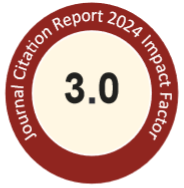Abstract
The antioxidant and antibacterial activities of phenolic compounds from cultivated and wild Tunisian Ruta chalepensis L. leaves, stems, and flowers were assessed. The leaves and the flowers exhibited high but similar total polyphenol, flavonoid, and tannin content. Moreover, two organs showed strong, although not significantly different, total antioxidant activity, 2,2-diphenyl-1-picrylhydrazyl scavenging ability, and reducing power. Investigation of the phenolic composition showed that vanillic acid and coumarin were the major compounds in the two organs, with higher percentages in the cultivated organs than in the spontaneous organs. Furthermore, R. chalepensis extracts showed marked antibacterial properties against human pathogen strains, and the activity was organ- and origin-dependent. Spontaneous stems had the strongest activity against Pseudomonas aeruginosa. From these results, it was concluded that domestication of Ruta did not significantly affect its chemical composition and consequently the possibility of using R. chalpensis organs as a potential source of natural antioxidants and as an antimicrobial agent in the food industry. © 2016
ScienceDirect Link
Recommended Citation
Ouerghemmi, I.; Bettaieb, Rebey I.; Rahali, F.Z.; Bourgou, S.; Pistelli, L.; Ksouri, R.; Marzouk, B.; and Saidani, Tounsi M.
(2017)
"Antioxidant and antimicrobial phenolic compounds from extracts of cultivated and wild-grown Tunisian Ruta chalepensis,"
Journal of Food and Drug Analysis: Vol. 25
:
Iss.
2
, Article 19.
Available at: https://doi.org/10.1016/j.jfda.2016.04.001
Creative Commons License

This work is licensed under a Creative Commons Attribution-Noncommercial-No Derivative Works 4.0 License.
Fulltext URL
https://www.sciencedirect.com/science/article/pii/S1021949816300412/pdfft?md5=5c6721e80f93a65f99fceb1018ffadfd&pid=1-s2.0-S1021949816300412-main.pdf
Included in
Food Science Commons, Medicinal Chemistry and Pharmaceutics Commons, Pharmacology Commons, Toxicology Commons


Abstract Image